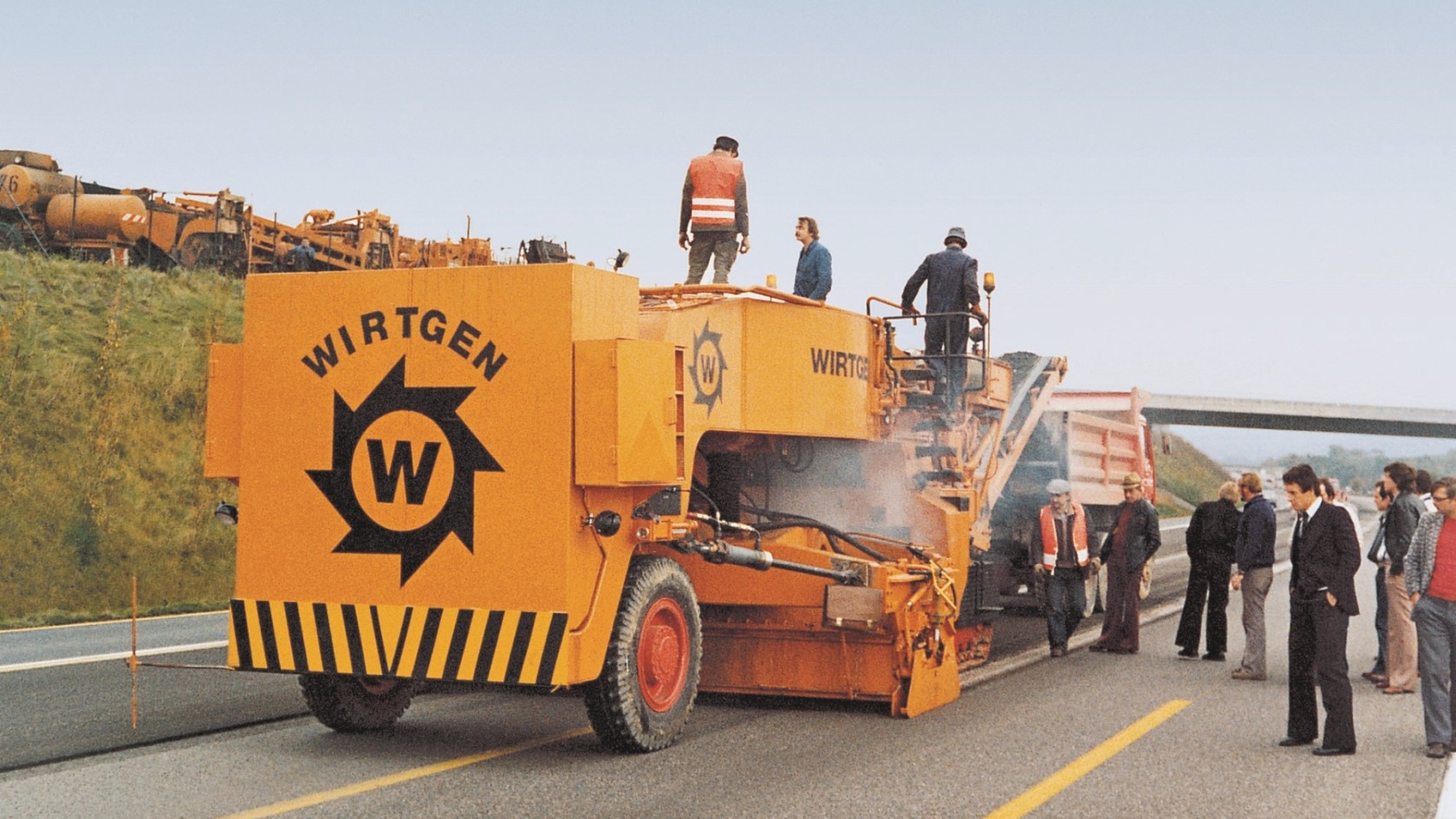Birth of the road milling machine


What followed then were initial successes with a concrete breaking machine, some determined tinkering and a never-ending search for new solutions. The early 1970s saw the emergence of "a modern-day monster before which even stone crumbles", as a headline in the daily press read: the road milling machine was born. Milling was introduced as a standard process in tender invitations and was soon an acknowledged method in road rehabilitation, too.
Following on the heels of hot milling machines, cold milling machines emerged as the next stage of development in the late 1970s – machines which could for the first time mill asphalt without pre-heating it. But the founder of the company was still far from satisfied. He was searching for a way to rehabilitate entire surface courses. His idea was to reuse the damaged pavement right there and then on the job site. Hot recycling – and later cold recycling – caused a stir in the industry. This cutting-edge, environmentally friendly process enabled road construction companies to operate extremely cost-efficiently.
WIRTGEN technologies were in great demand – in Germany and beyond. It was at this time that the small-to-medium-sized company began to internationalize its operations, establishing its own subsidiaries in Europe. Overseas operations became commonplace for Wirtgen machines – be it in the USA, Brazil, China or India.